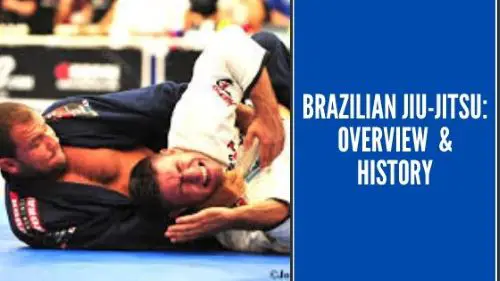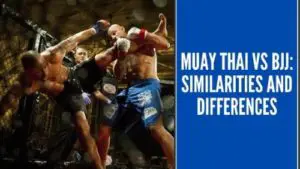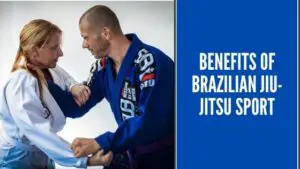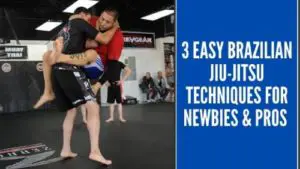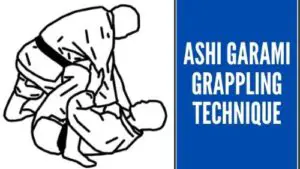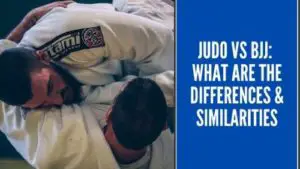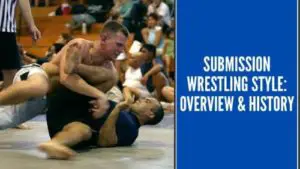Martial arts come in different styles. Mastering each martial arts style may be easy or difficult. There are those that require lots of dedication and training. On the other hand, styles also exist which are deemed appropriate for beginners. Still, no matter which martial arts style you choose, we suggest that you try Brazilian Jiu-Jitsu (BJJ). Today we will provide you will all the information to get you familiar with it.
What Brazilian Jiu-Jitsu (BJJ)?
BJJ is considered to be one of the most potent martial arts in the world. This is the reason why martial arts enthusiasts are always eager to learn.
People who saw BJJ in action claim that a person that masters it no matter can take up opponents twice their size. BJJ is a martial art style that works well for people with petite body composition.
BJJ is very effective because it is derived from techniques that immobilize the opponent. The movements related to these martial arts is not all about inflicting damage but is also about making the opponent unable to move.
BJJ consists of movements that aim to beat an opponent who has more physical prowess by using joint locks and chokeholds.
In practice, the basic objective of BJJ is to use hands and legs to immobilize the opponent. This is possible by using techniques such as pull guard, close guard, scissor guard, full mount.etc. By using these, a BJJ practitioner will be able to cramp their opponents’ feet, hands, legs, arms, etc., which results in loss of mobility.
Brief History of Brazilian Jiu-Jitsu
Jiu-Jitsu pertains to “gentle art” and throughout Japan’s early years it has been widely practiced by many Japanese.
Brazilian Jiu-Jitsu traces its origin back into Japan and when talking about how it began, there are three key figures that hold importance to its birth. These figures are Jigoro Kano, Mitsuyo Maeda, and the Gracie Family of Brazil.
Jigoro Kano
All techniques and movements practiced in BJJ came from Kodokan Judo that Jigoro Kano invented. Kano started practicing Jiu-Jitsu at age 17 upon entering Tokyo Imperial University. He studied under the roof of three masters; Hachisosuke Fukuda, Masatomo Iso, and Tsunetoshi Ikubo.
All three masters taught Kano various techniques and aspects of Jiu-Jitsu. Having three teachers meant that Kano had the chance to assimilate various knowledge.
Though having different teaching methods, all three masters taught him the importance of randori (free practice). Randori, later, became an integral part of Kano’s development to Judo.
Kano’s third teacher further taught him Kito-Ryu Jiu-Jitsu. It is a martial art that puts emphasis on striking, throwing, joint locking, and choking techniques.
He continuously modified technique in Kito-Ryu using randori. This gradual modification of the actions and movements used in Kito-Ryu Jiu-Jitsu soon gave birth to Kodokan Judo.
Mitsuyo Maeda
If Jigoro Kano was to thank for making the base knowledge needed to practice Brazilian Jiu-Jitsu, his student Mitsuyo Maeda was the one responsible for opening the pathway for BJJ’s birth.
After Kodokan Judo was introduced, it soon defeated various traditional Jiu-Jitsu schools. Thus, it earned the attention of many students. Out of all the students who enrolled, Mitsuyo Maeda was the most important.
Maeda studied Kodokan Judo under Jigoro Kano’s best student, Tsunejiro Tomita. He was a very fast learner who is adept at executing techniques and this helped rise quickly through the ranks of his fellow practitioners.
At age 26, Maeda left Japan with Tomita and headed to the United States with the aim to introduce Kodokan Judo to the rest of the world.
The year 1905 was the golden age for Kodokan Judo outside of Japan. Maeda, together with his teacher, demonstrated Kodokan Judo to various places in the U.S. such as the Columbia University, Princeton, and the U.S Military at Westpoint. After these endeavors, Tomita and Maeda parted ways due to causes unknown.
This separation did not dishearten Maeda and he continued to exhibit the effectiveness of Kodokan Judo. He wowed many people and defeated various opponents outside of his homeland.
His time abroad soon led him to reside in Brazil where he met Gastao Gracie. This fateful encounter serves as a pivotal point for the birth of Brazilian Jiu-Jitsu.
The Gracie Family
Aside from demonstrating Kodokan Judo, Maeda also spent his time in Brazil helping fellow Japanese agreements. His efforts to give them a place to live were supported by Gastao Gracie, a politician, and businessman.
Maeda knew that he doesn’t have money to repay the kindness he received, so he offered to return the goodwill by teaching Gastao’s son, Carlos Gracie, Kodokan Judo.
Maeda taught Carlos Gracie for four years. Lessons from him include instructions on the proper execution of throwing techniques and groundwork used in Kodokan Judo.
Aside from this Maeda provided Carlos practical insights and strategies from his previous combats. In 1921, the Gracie family moved to Rio de Janeiro, and this barred Carlos from learning Kodokan Judo further.
The transfer of residency and the lack of instructions from his master cannot stop Carlos Gracie’s passion for martial arts. Carlos has 4 siblings. He passed what he learns from Maeda to the three, Oswaldo, Gastao, and Jorge.
On the other hand, the fourth sibling, Helio, was left to learn by watching due to his poor health. In 1925, Carlos opened his very own Jiu-Jitsu academy.
Though sickly, Helio was very observant and he managed to learn how to do the movements done by his brothers just by looking at them. This trait gave Helio the chance to teach at his brother’s Jiu-Jitsu academy.
As an instructor, Helio Gracie modified various techniques that he learned to match his frail constitution. This effort soon led to the techniques that BJJ has today.
Aside from this, Helio’s efforts led him to contribute to the establishment of UFC where his younger brother, Royce Gracie, was one of the first participants.
Brazilian Jiu-Jitsu Belts
BJJ adheres to the Japanese martial artist’s method of indicating the practitioner’s ranks. Similar to Karate, Judo, and many others, BJJ uses belts. The bets are also used for defensive and offensive techniques.
White belts are given to beginners. Those ranking above beginners are given blue belts. Purple belt is given to intermediate practitioners. while brown belts are given to those who have rankings lower than first-degree black belters.
When a BJJ practitioner reaches the seventh degree of black belt, they will be given red/black belt otherwise known as a coral belt. Upon reaching the eight degrees of being a black belter, they will be awarded a red/white belt.
A full red belt is considered to be the highest honor among BJJ practitioners since it is only given to those reaching the ninth and tenth degree of being a black belter.
Brazilian Jiu-Jitsu Popularity
Since its origin, BJJ has been widely studied by people from various countries located in Asia, Europe, America, etc. It is already common nowadays to see Brazilian Jiu-Jitsu Academies in various places.
Non-Asians have continued to be the dominant practitioners within the BJJ community. Some BJJ champions are Bianca Andrade, Kyre Gracie, Luanna Alzuguir, and Gabrielle Garcia.
There are also famous and rising MMA fighters that use BJJ such as, Ricardo Arona, Thales Leites, Ricardo Almeida and Gabrielle Gonzaga.
The popularity of BJJ even extends to movies. It was featured in the movie “Flash Point” together with other martial arts. In the movie “Oblivion” Tom Cruise can be seen performing the triangle choke, one of the moves used in BJJ.
In “Fast and Furious” Paul Walker performs close guard and guillotine on his opponent. In “Lethal Weapon”, some of the fight scenes were choreographed by Rorion Gracie, a formidable BJJ grandmaster.
There you go! We hope that the information above will be enough to convince you that learning Brazilian Jiu-Jitsu will be worth your time and effort.
It’s a very popular martial art that many people love due to its practical application. By learning BJJ, you’ll be able to defeat opponents even if they’re twice your size. Immobilize adversaries now by learning BJJ!
If you like this BJJ overview, let us know by giving us a share. If you got any other mixed martial arts request or just more Muay Thai training guides, then send us a message.
